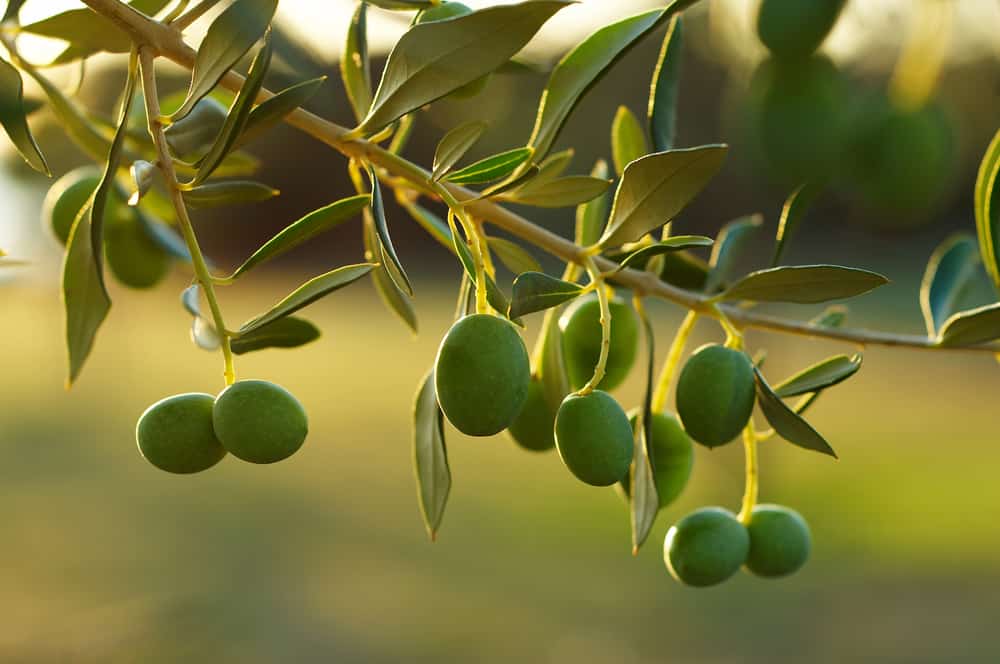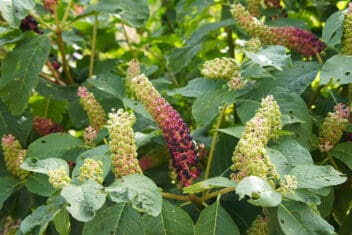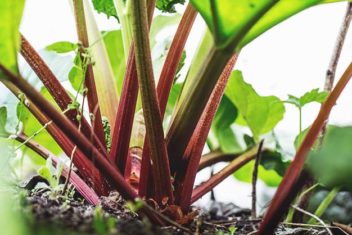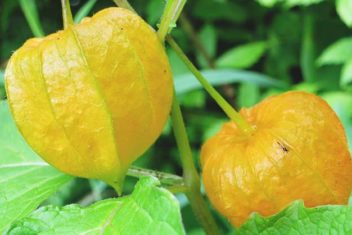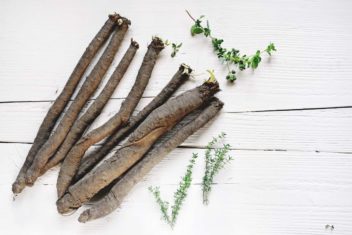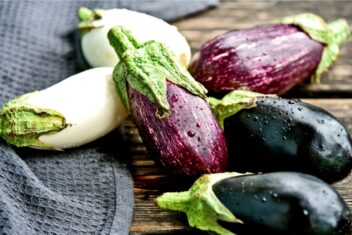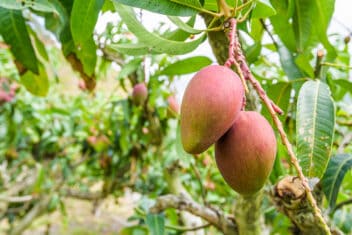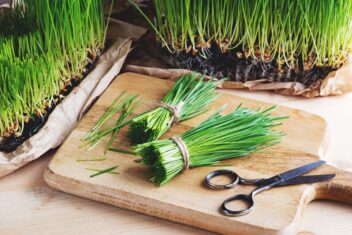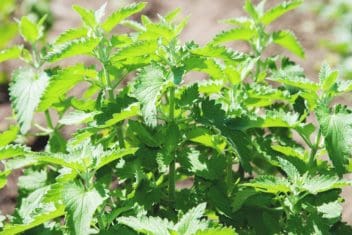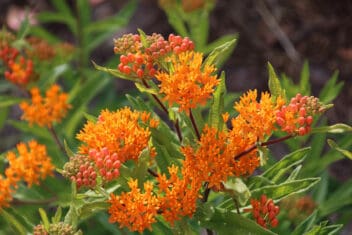Growing olives in your home garden is to be a part of ancient gardening history. Olives date back to ancient Greece, so I can’t help but imagine those same plants growing in the Mediterranean sun when I look at mine laden with delicious fruit.
Olive trees are easy to grow and maintain, and they do equally as well in containers or the ground. It all depends on what your olive goals are.
You can plant olive trees for decoration or for their lovely harvest. Interested in growing olives? Then let’s get to it.
What Are Olives?
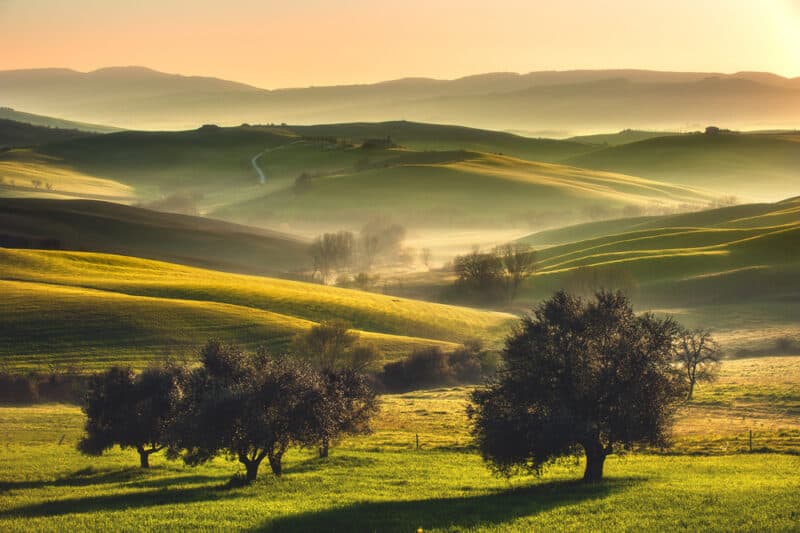
Olives (Olea europaea) are evergreen trees that, when looked after properly, will last generations of your family.
They first spread from Iran and Syria to the Mediterranean thousands of years ago and are one of the oldest cultivated plants in human history. Olives were found in Egyptian tombs as early as 2000 BC.
Franciscan monks started growing olives in groves in California as they settled there, bringing what is now a thriving industry to the state.
The olive tree can be used for oil, fruit, and ornamental uses. Depending on the cultivar, they can grow in USDA Growing Zones 8 to 11. Some may be suitable for Zone 7, so don’t give up on your olive dreams if you live in that area.
Most grow best in areas that generally stay above 20°F, but some will tolerate brief cold snaps below that. If you are willing to move a large container indoors during the cold months, you can grow olives even in cooler regions.
Ten of The Best Olives Cultivars
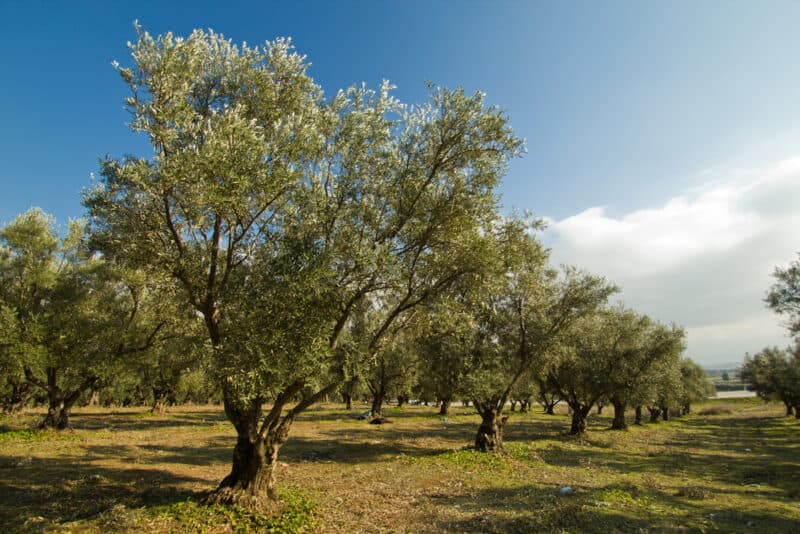
All of these are fruiting olives. You can also choose non-fruiting varieties if you’re growing olives solely for aesthetics. ‘Majestic Beauty,’ ‘Swan Hill,’ and ‘Wilsonii’ are all excellent options for growing olives that are purely ornamental.
For fruiting trees, here are some of the best:
1. Mission
This cold-tolerant cultivar has been grown in California since the 1700s. It’s perfect in Zones 7 to 10 and can be used for both oil and fruit.
‘Mission’ makes for a great snacking olive. Brine-cure the green olives and oil-cure the black.
2. Manzanilla

These are the large green olives you buy stuffed with pimentos. Although slow-growing, ‘Manzanilla’ is exceptionally productive. It’s more susceptible to diseases than some cultivars and isn’t keen on cold weather.
‘Manzanilla’ grows well in Zones 8 to 10. It’s a large cultivar that can grow up to 30 feet tall.
3. Arbequina
If you intend on growing olives in a container, ‘Arbequina’ is a good choice. It’s reasonably cold-tolerant and best in Zones 8 to 10.
‘Arbequina’ stays small when confined in a container, but will grow up to 30 feet tall in the ground. The fruits are symmetrical and dark brown to dark blue.
4. Kalamata
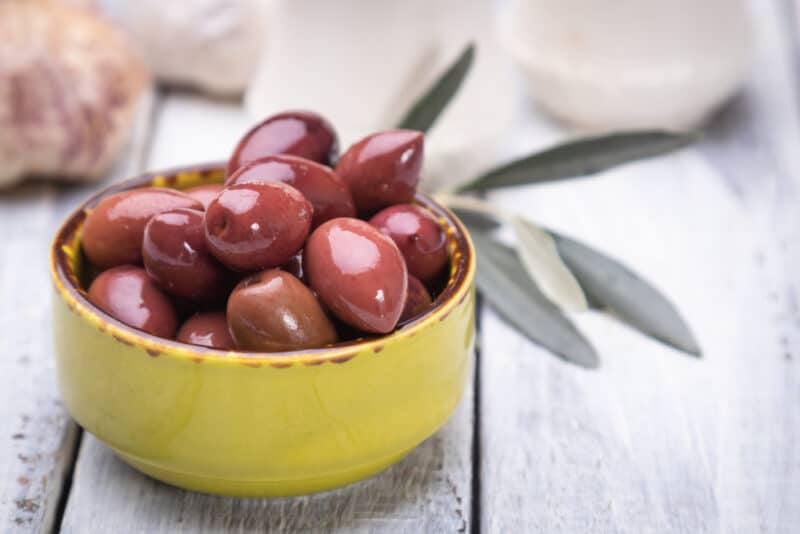
These dark, reddish-purple olives are well-known and usually preserved in oil. Unlike some other varieties, ‘Kalamata’ don’t like sweltering conditions.
Grow in full sun in Zones 7 to 10. It will grow up to 25 feet tall.
5. Picholine
Try ‘Picholine’ if you want to try growing olives in containers. ‘Picholine’ has green fruits that taste nutty, so they make for great snacking olives. Allow the olives to ripen to black if used for oil.
Picholine was cultivated in France and will grow up to 30 feet tall if allowed. Grow in Zones 8 to 10 in full sun.
6. Amfissa
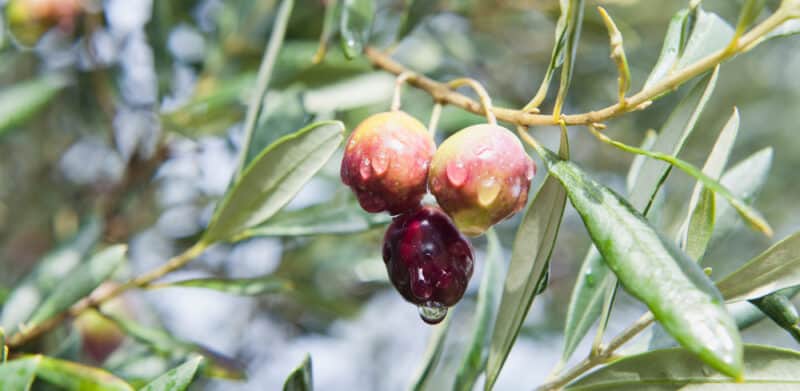
This cultivar is originally from Greece and produces purplish, almost black fruit. Brine cure them for a mild nutty flavor.
‘Amfissa’ is a fast-growing tree and a vigorous producer. It will produce usable fruit in around four years.
Grow in full sun in Zones 9 to 11.
7. Gordal Sevillano
This Spanish cultivar produces a meaty, light green olive perfect for snacking and using in recipes. You often see these olives stuffed with pimento.
Grow in Zones 8 to 11 in full sun, and after a few years, the trunk becomes gracefully gnarled like the olive trees in the Mediterranean, which adds a beautiful look to the garden.
8. Nicoise
Famous as a critical ingredient in Nicoise salad, the small, spicy fruits are smoky and firm. ‘Nicoise’ trees have broad leaves and form a weeping growth habit. The olives grow in about two years, so this cultivar is suitable for impatient gardeners.
Grow in Zones 8 to 11.
9. Nocellara Del Belice
These bright green olives are considered some of the best table olives you can grow. They have a mild flavor and buttery texture.
The dense canopy of this cultivar provides shade on hot days, and the tree has good resistance to pests and diseases.
Originally from Sicily, this is a smaller tree topping out at about 20 feet high. Plant in full sun in Zones 8 to 11.
10. Frantoio
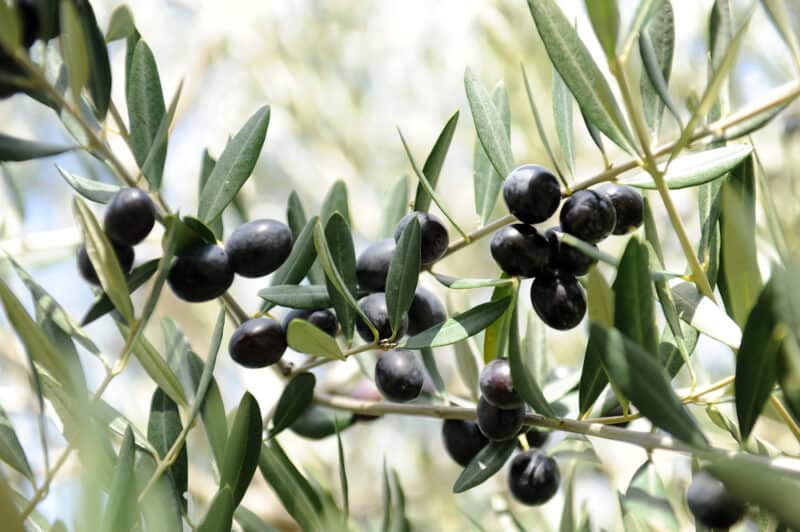
These dark olives are easy to grow, and the tree is prolific. The olives can be used for both oil and fresh eating. The foliage is slightly silvery, and the tree is another fast-growing cultivar. In the right conditions, ‘Frantoio’ will produce in as little as a year after planting.
How to Propagate Olives via Cuttings
There are many ways of growing olives, from planting seeds to buying a young tree.
Olives are easy to propagate from cuttings, and the resulting plant will be identical the mother plant, which isn’t always the case with seeds. Propagating olives from cuttings will see fruit in around seven years. If you grow from seed, olive trees will likely take up to 15 years to bear fruit.
Take the cutting in the summer once the new growth has hardened off. If you are growing olives for harvest, wait until the new olives have formed and are visible.
Cut a healthy branch about 8 to 10 inches from the tip. Pick a branch that is about a year old and is soft and pliable. Cut about 1/4 inch below a leaf node. The node is where the new roots will develop.
Remove all the leaves except for the top four inches.
Dip the cut end into some rooting hormone. Olives are prolific, but appreciate the extra help when forming roots.
Insert the cut end into a small container containing seed-raising soil. Don’t use dirt or straight compost. You need something lighter for the roots to develop.
Place the container in a warm area where it will receive indirect sunlight. The temperature should be maintained at around 70ºF. If you can’t keep this temperature, consider using a heat mat.
Mist the cutting twice daily, and add a little water to the soil as it dries out. Within three months, the roots should begin to form. Tug the cutting slightly to test for resistance. If it resists, you have roots.
Leave the container where it is until spring, but water it when needed to keep the soil moist but not wet.
After the last predicted frost date, move the container outside, protected from wind and rain. You’ll want to harden it off for a week or so to acclimate it to the great outdoors. Keep it outdoors in its container throughout the summer.
In the fall, transplant the rooted cutting to its new home in the garden or a large container if you live in a warm area. Plant out in spring if you have frigid winters.
How to Plant Olives in Containers
Growing olives in containers is a good option for people who don’t have the ideal climate or just want an ornamental option.
- Use a container that is at least 18 inches across
- Make sure the container is free-draining. Olives don’t like to sit in soggy soil.
- The water must drain quickly, so consider using a container with more than one drainage hole.
- Use a good-quality potting mix.
- Place the container inside or outside, and make sure it receives about six hours of sunlight.
- Place an inch of organic matter on the top of the soil in the container.
- If the olive is outside, move it inside or to a warmer location if the weather freezes.
- Repot or plant the olive in the ground in about two years.
How to Care For Olives
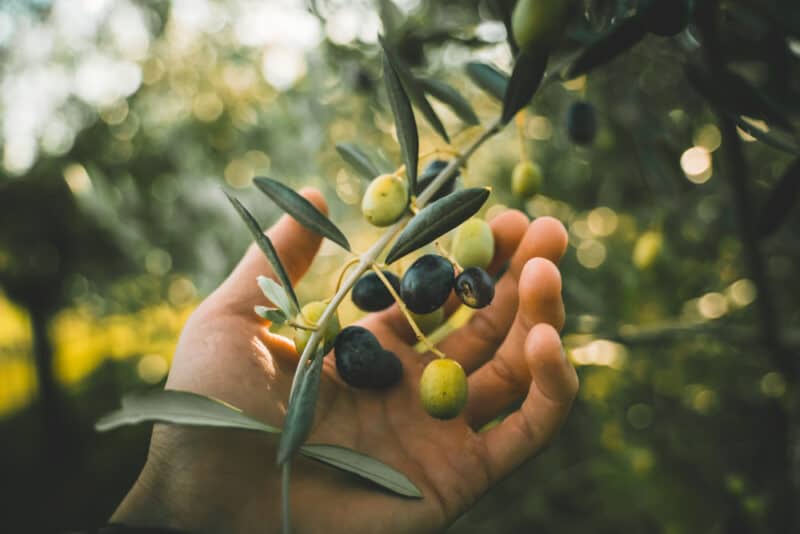
Plant olives in spring if your winter temperatures go below 30ºF. If you live in a warm area, plant in spring or fall. Never plant in summer.
Olives love the sun, so provide them at least six to eight hours of sunlight daily.
The soil must be free-draining, loamy with plenty of well-rotted compost dug in at the initial planting. Avoid heavy clay soil.
Plant with the top of the root ball slightly over the soil line.
Water in spring and summer. Do this twice weekly and water deeply. If you have a drip irrigation system, this is even better for olives. Reduce watering in fall and winter. If you get rainfall in those seasons, consider stopping any additional water.
You won’t need to add supplemental water once the tree is established in most areas. They’re pretty drought-tolerant.
Olive trees aren’t heavy feeders and only require fertilizer if the soil is deficient in nutrients.
Pruning Olive Trees
I only prune olives to remove dead and dying branches and for shape to allow sunlight into the center of the tree. Olives produce fruit on growth from last year. If you want fruit production, prune lightly.
Olives are usually alternate bearing, so they may take a rest from big harvests each second year.
Best Companion Plants For Olives
Olives grow well with lots of other plants that have similar growing requirements. Think of the plants that you’d find in Mediterranean gardens, such as:
Problems and Solutions for Growing Olives
Olive trees aren’t without problems. If you plant them in the right environment and provide them with the care they need, they’re more likely to stay healthy. Even still, you may encounter the following common problems:
Olive Fruit Flies
Olive fruit files (Bactrocera oleae) are a serious pest affecting olive harvests.
The adult is a quarter inch long and red to brown with big red eyes. The thorax will have white or yellow spots on the side. The female fly lays her eggs in the fruit of olive trees, and the developing larvae eat the pulp, rendering the fruits inedible.
Home gardens are particularly susceptible due to not being managed as precisely as commercial businesses.
Adults can over-winter in warmer areas, or they will over-winter as pupa or larvae.
The first thing you may notice is a little bump or “sting” on the surface of the fruit. The best time to check is in the winter when a few remaining fruits can be examined, though you can check throughout the growing season.
Remove any left-over fruit after harvest and pick up all olives that fall on the ground at the end of the growing season. Bury them at least four inches deep or put them in the garbage.
There are a variety of trap styles to trap and monitor olive fruit flies, so see what is available in your area.
Olive Knot
Olive knot forms on the rough bark of the tree, not the leaves. The knots will ooze bacteria when it rains, infecting other plants and spreading around the infected plant.
The galls are about two inches wide. The danger is when the gall girdles the infected branch.
Spray yearly with copper. Cut out the infected branches in the dry season with clean shears, and disinfect them afterward.
Other issues may include:
Harvesting Olives
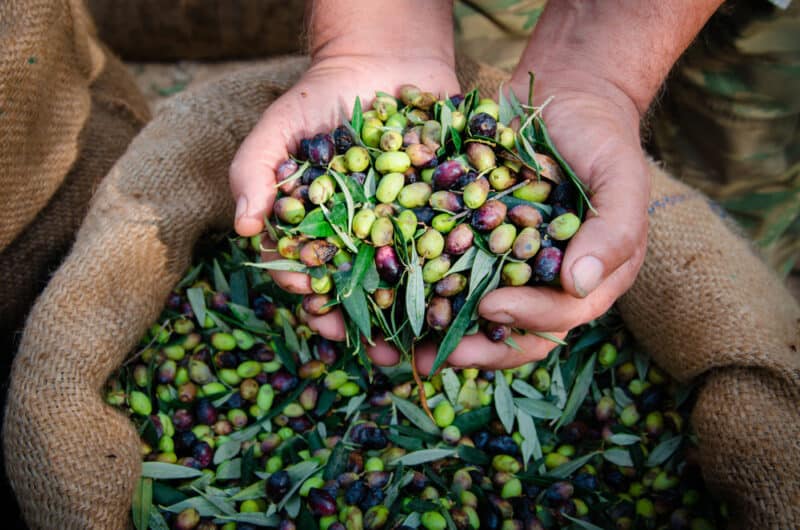
Harvest when green or when fully ripe and dark in late fall. They need to be cured in brine or sun-dried, depending on how you are using them.
Check out our guide for making homemade olive oil.
